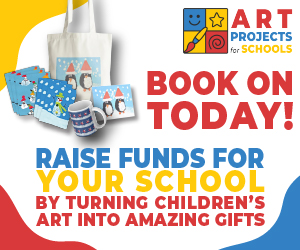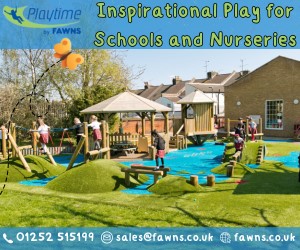A PTA event should enable the whole school to come together in a safe and enjoyable space. Making sure your events are considerate of all children’s needs means everyone can partake in the experience equally and have their share of fun.
Your first port of call should be to talk to parents to see where children are at risk of being left out and find any areas of weakness that can be addressed. Wherever possible, give children and their parents the opportunity to have some input into the planning of events.
If you have a SEN parent forum then consult with them to discover the specific needs within your school, or send along a PTA representative to their meetings. Get the children involved, too and find out what they’d like and what their concerns may be. Parents and children are a great source of information about what works well.
Involve the school SENCo to discuss the needs of individual children. The school can’t share sensitive information, but if you collect a list of who’s attending an event you can hand this over and ask if any special arrangements need to be made to ensure everyone’s safety and enjoyment.
While requirements will vary from school to school and child to child, we’ve considered the various elements of PTA events that could have a negative effect on a child, and how to adapt them to ensure everyone can enjoy themselves.
Noisy and crowded
Situation: A mass of people can be overwhelming, making children feel uncomfortable and anxious.
Consideration: Invite SEN children to the event early so they can get used to the growing atmosphere gradually, rather than walking straight into a noisy, crowded space.
Ensure areas aren’t overcrowded and there’s enough space for the number of visitors attending. Don’t cram everything into a small space, and make sure all stalls can be navigated easily. Consider ticketing events and selling in advance so you know there won’t be more attendees than can be accommodated by the space and volunteers.
Create a special ‘quiet area’ where children can go to be away from the people and noise if they need to. Make this cosy and fun, with activities such as games or colouring for children to focus on. This could be set up in the familiar space of a classroom, or how about a tent at outdoor events? This is particularly useful if the school/classrooms aren’t accessible at events that are being held outside of school hours.
Sensory overload
Situation: As well as the issue of crowds of excited people, each event in itself can have extra elements that build up alongside this. Events such as discos and music festivals can bring noisy music and intense or overly dim lighting.
Consideration: Consider the lighting/sound at events and try to ensure it’s not overwhelming. If it’s a sensory-heavy event such as a disco, create a quiet area for children to escape to. If you have two spaces that can be used for discos, have a quieter, lighter area and let the children flow freely.
For many people, noise is the top thing that causes sensory overload. Bear this in mind when setting up PA systems, DJs and performers. Always make sure there’s a clearly signposted place to escape the noise if needed. Some schools provide ear defenders for children sensitive to noise, so make these available if you have them.
Everything looks different
Situation: Many events mean a change of scenery, with stalls set up in classrooms or disco lights in the school hall. These changes can be uncomfortable or upsetting for some children.
Consideration: It’s important to reduce this stress by providing appropriate information so that parents can prepare their children in advance. For events that have a programme, produce these early where possible, and offer them to SEN parents in advance so they can talk their child through what’s going to happen. Uncertainty can be unsettling, so this will ensure that children know where they’re going, what they’re going to be doing there and what to expect. If the event doesn’t have a programme, try to produce a document with bullet points explaining how the event works. For bigger events, a map will be a fantastic visual aid. Where events are run regularly, can you provide photos or even a video of the last event so the children involved can see what the event is likely to look like? You could even put together a short ‘social story’:
Sports day social story
‘Many children find sports day overwhelming, so last year one of our parents suggested putting together a ‘social story’ to cover the event at our school.
Our sports day follows roughly the same format every year, so it seemed a good investment to have the social story made up into a proper hardback book which could be used year after year. We used Snapfish, and the PTA funded the printing costs.
We felt it was really important to have lots of pictures of real sports day situations in the social story, so parents from our SEN forum were asked to contribute photos from previous sports days.
One of our parents then wove the pictures together with a narrative about sports day, written to be informative and reassuring. She even included some questions at the end, to help children reading the story think about sports day, and to check they had understood everything they had read.
Our sports day social story has now been used for a second year. Copies of the book were shared with children who expressed concerns in the weeks prior to the event.
It has really helped to manage their expectations and allay any concerns they may have had about what happens on the day.’
Sarah Everson, Secretary, Friends of Halsford Park Primary, East Grinstead, West Sussex (415 pupils)
At the event, ensure areas and facilities are signposted. It would be great if these matched the labels on the map. Ensure key areas such as the quiet area, toilets and refreshments are signposted.
Too much information
Situation: Events that depend on a lot of instructions can mean an information overload for children.
Consideration: If your event has instructions, for example a construction challenge or beetle drive, have written copies available so children can refer back to them and have time to process the information. Ensure instructions, both spoken and written, are clear.
Anxious children
Situation: The prospect of attending an irregular event where things aren’t always as expected may alarm children and discourage them from partaking in activities.
Consideration: If it’s a child-only event, set up a refreshment room for parents so they can stay in the building as a comfort to the child (and you can also make extra funds by selling teas and coffees!). If the child is overwhelmed, then the person best prepared to calm them down is nearby. This room can also double as a retreat for the child if necessary. Alternatively, invite the parent to volunteer at the event. Having more volunteers is always a good thing; it will be a comfort to the child, and you may find the parent enjoys the experience and becomes a regular.
Risk assessments
Because every child and school is different, it’s important that every event has its own risk assessment to determine the number of volunteers needed. As part of this, consideration should be given to ensuring that there are enough adults to deal with any issues, with the appropriate number left over to continue supervision of the rest of the group. When carrying out a risk assessment, find out from the school what kind of strategies and approaches they use. It may also be appropriate to talk to parents to find out what works for them.
Holding some general awareness-raising sessions could be useful, too –see if you can invite your SENCo to speak to your PTA committee and volunteers to make them more aware of how to support all children.
General tips
- As well as creating inclusive events and encouraging children to attend, hold some more relaxed, activity-based fundraisers throughout the year, for example, colouring competitions, Christmas card fundraisers or silver smarties. A wider variety of ways to get involved means you’re more likely to reach all children, and taking part in smaller fundraisers may give them the confidence to attend a larger event.
- At big events, have clear volunteers and adults available, so children know who to ask if they need support. Encourage school staff to get involved, as the familiar faces will be reassuring for children. Lanyards or T-shirts will make those in charge obvious.
- Be patient and give children time to process options when it comes to face painting or prizes. It’s important not to overwhelm children with too much choice.
- For event inspiration, ask parents and children what activities they enjoy and see if there are any common suggestions, e.g. sensory, tactile activities could mean you organise a craft event after school or introduce more interactive stalls into your summer fair.
- As well as asking them questions, give parents and children the chance to ask you any questions they may have. This gives both parties the opportunity to find out more about, and take into account, any individual needs.
- Some children may find comfort in using ear defenders. Be aware of this and let parents and children know that this is welcome at your events.
Apply it to an event
Adaptions will be dependent on your specific event, but we’ve pieced together this advice to apply to three common PTA scenarios.
- Summer/winter fair: Hand out programmes in advance where possible. When setting up, make sure stalls aren’t crammed too closely together and create a quiet area. Signpost this, as well as other important facilities. Work with your SEN forum, SENCo and pupils to ensure there are stalls and activities that all pupils will enjoy. Invite SEN children to the event early, making sure there are clear volunteers and adults available, and make options clear on stalls where there are choices.
- Disco: Provide parents with bullet points of what will happen at the event so they can go through this with their child. Consider noise levels and lighting when planning the music, DJ and décor. Have a refreshment room where parents can stay – this can double as a quiet area in which children can unwind. If you have the facilities, have two disco rooms, one of which is quieter with subtler lighting, and allow children to flow freely between the two.
- Beetle drive: Provide parents with bullet points of what will happen at the event so they can go through this with their child. Explain the instructions for the activity clearly, making sure everyone can hear. Have paper copies available so people have time to process the rules.
Next steps
All children are different and not every idea will bring comfort to all, but by taking measures like these you can create an inclusive event where every child feels safe and has fun. Not all PTAs will have the capacity to implement every change, but work together with your school to see what is feasible. Even small changes can make a big difference.
Arrange a meeting with your school SENCo and parent SEN forum to find out how you can best address the specific needs at your school. Review how each of your events are run, and work with staff, SEN parents and pupils to see how these can be adapted to include everyone. Find more resources and information at nasen.org.uk.




.gif)






